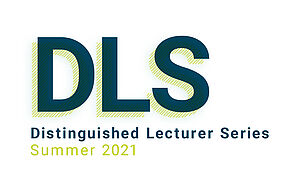
DLS Special: Philip Russell - Three decades riding the photonic crystal fibre wave
Virtual Lecture
Lecture available on YouTube
Abstract:
Thirty years ago I proposed that a hair-thin glass fibre perforated along its length with an array of microscopic hollow channels might guide light in novel ways. In such a "photonic crystal fibre" (PCF) the hollow channels would strongly scatter light and thus could be used to "corral" it within a central hollow or solid core. Initially it was far from clear that such an intricate microstructure could ever be made, since nothing comparable had previously been attempted. Nevertheless, after several years of trying different approaches, the first light-guiding PCF emerged from the drawing tower in late 1995, ushering in a new age of fibre optics. By offering enhanced control over the propagation of guided light, PCF has led to a whole series of scientific and technical breakthroughs in the science of light. Solid-core versions are being used to transform invisible infrared laser pulses into white light millions of times brighter than the sun – revolutionary new light sources with a multitude of applications. Hollow core PCFs filled with gas are used to compress infrared laser pulses to durations a million-billion times shorter than a second, underpinning a range of unique and extremely bright sources of tuneable deep and vacuum ultraviolet light. When chirally twisted, PCF acts like an impeller, creating optical vortices with fascinating properties. In hollow core PCF, small particles can be optically trapped and propelled over long distances and used as moveable point sensors. In the lecture I will look back over the last 30 years, and discuss how some of the scientific discoveries made possible by PCF have evolved into real-world applications.
Biography:
Philip Russell is Emeritus Director at the Max-Planck Institute for the Science of Light (MPL), which he co-founded together with Gerd Leuchs in January 2009. From 2005 to 2021 he was Krupp Professor of Experimental Physics at the University of Erlangen-Nuremberg. He obtained his doctorate at the University of Oxford in 1979, spending three years as a Research Fellow at Oriel College, and subsequently worked at universities and research establishments in Germany, the USA, the UK and France. His research interests have focused mainly on the physics and applications of periodically microstructured materials, especially photonic crystal fibres. He is a Fellow of the Royal Society and The Optical Society (OSA) and is the recipient of several awards including the 2000 OSA Joseph Fraunhofer Award/Robert M. Burley Prize, the 2005 Thomas Young Prize of the Institute of Physics, the 2005 Körber Prize for European Science, the 2013 EPS Prize for Research into the Science of Light, the 2014 Berthold Leibinger Zukunftspreis, the 2015 IEEE Photonics Award and the 2018 Rank Prize for Optoelectronics. In 2016 he received an honorary doctorate from the Universidad Internacional Menéndez Pelayo in Santander, Spain, and he was OSA's President in 2015, the International Year of Light.





